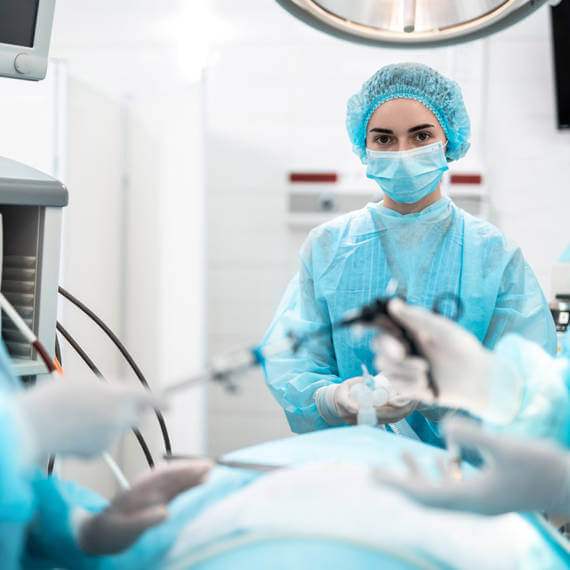Laparoscopy – what is it for, and what are its benefits?
The aim of gynaecological laparoscopy is to examine the reproductive organs located in the abdominal cavity without having to open it invasively, which risks numerous complications and scars left on the body, but above all the need for a longer convalescence of the patient. Laparoscopy makes it possible to diagnose the internal organs after making just one tiny incision. During the procedure, samples for microscopic examination can also be taken. The examination is safe for patients of all ages.
Endoscopic technique also allows for the treatment of such conditions as:
- cysts,
- adhesions,
- polyps,
- endometriosis,
- ectopic pregnancy.
Such a wide application of this method makes the laparoscopy procedure one of the basic methods of diagnosing and treating infertility, but also previously undiagnosed pains in the abdominal region.
What does a laparoscopy procedure involve?
The procedure is carried out under general anaesthesia. The trocar inserted into the abdominal cavity is equipped with a camera, light source and specialised electrosurgical microsurgery tools. Before the trocar is inserted into the abdominal cavity, it is filled with carbon dioxide so that the various organs move away from each other, giving the operator a better view of the organs.
To insert the trocar into the abdominal cavity, it is sufficient to make a small, longitudinal incision no larger than 5-10 mm. The operator sees an image from inside the body on a monitor. Once the procedure is complete, the incisions are stitched together with single sutures.
Laparoscopic examinations in gynaecology
Laparoscopy has found its way into gynaecology because it is much less traumatic than traditional surgery, which, given the delicacy of the organs of the reproductive system, provides much greater safety and less risk of complications. With this method of examination and treatment, gynaecologists can carry out procedures such as:
- laparoscopic fallopian tube patency test – fallopian tube obstruction is a very common cause of female infertility,
- removal of lesions of the reproductive organs (cysts, adhesions, myomas, tumours, etc.),
- examination of the correct structure and position of the reproductive organs,
- treatment of endometriosis,
- treatment of Fallopian tube inflammation.
Diagnostic laparoscopy – indications
Laparoscopy is recommended for many fertility problems such as:
- malformations of the genital organs,
- ectopic pregnancy,
- inflammatory changes of the appendages,
- static disorders,
- undiagnosed causes of infertility,
- the need to remove genital lesions.
Complications following laparoscopy
Laparoscopy is a minimally invasive examination and poses no significant danger to patients. Possible complications are extremely rare and do not pose a major health risk. These include:
- anaesthetic complications – related to the administration of anaesthesia,
- postoperative bleeding,
- abdominal hernias around trocar insertions sites,
- tissue damage associated with the insertion of surgical instruments into the abdominal cavity.
Diagnostic laparoscopy is performed only at the Gameta facility in Rzgów.
